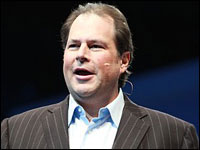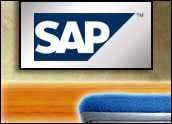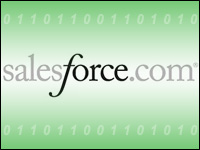
One of the more revealing things I heard from Marc Benioff at Cloudforce 2011 in New York last week was his idea about how his company will continue to build out its product line. Marc’s never been super secretive about his general direction, though product specifics have always been closely kept. But in our conversation, he reiterated a long-held belief that makes more sense than ever.
For a long time, the natural assumption has been that a software company needs to balance out its offerings. So a company focusing on back-office financials should build or buy CRM, and a CRM company should build or buy ERP. But the number of companies that succeeded at this approach is small. Only a few companies I can think of actually succeeded in this, and they were all back-office software companies to start with.
SAP, Oracle and Microsoft come to mind, and you can add Sage too if you also add the caveat that Sage buys everything. NetSuite built everything at once, more or less, but started as an ERP company, and its DNA remains squarely in the back office. Ask CEO Zach Nelson about his approach and he’ll tell you that ERP is the system of record, period. I am not saying any idea is good or bad. The companies I’ve named have been very successful, and they are long-lived. But past performance is no indicator of the future, as they keep telling me in the mutual fund industry.
Any Love for the Back Office?
Siebel was a successful front-office company that never expressed interest in developing back-office technology. Siebel’s expressed strategy was to be a good integration partner. They might have pursued a strategy like what I think Salesforce is pursuing, but they ran out of runway. The product had issues, and there were reputation issues that may or may not have been their fault, and the investors grew impatient. At any rate, Siebel became an asset of Oracle and continues to be the backbone of Oracle’s CRM platform, and it is integrated well with Oracle Financials at this point.
The other day at a lunchtime Q&A in New York, Benioff was asked directly if Salesforce would turn more attention to the back office. It was a logical question for many reasons. We are in the midst of a replacement cycle in ERP, for one thing. The systems in use today were put there a decade ago or longer largely by companies looking to beat the millennial clock. Ten years is a long time in the software business, and those ERP systems are ripe for replacement. Indeed, many vendors are staking their strategic lives on the replacement cycle. But not Benioff.
At the Cloudforce 2011 lunch in New York, Benioff patiently explained that Salesforce has a budding ERP system in FinancialForce, and the company has a strong partner base, and that its products are open, allowing for easy integration with any products, including ERP. But he resisted the idea of becoming a back-office company, saying that Salesforce would not build an ERP system and instead questioned the logic of the front- to back-office product line approach today.
According to Marc, with partners and integration capabilities and openness, the primary reason for integrated front- to back-office solutions looses steam. What was once received wisdom just a few years ago, that customers ought to buy all their software from the same source — products already integrated — no longer holds in the modern cloud economy. As important a statement as that is, though, it was not Benioff’s major point.
New Lands
Marc’s big idea and strategic vision is that the front office is still being built out, and Salesforce intends to continue leading the charge into what it sees as fertile, if still undiscovered, new territory. One might think that sales, marketing, service, support, help desk and field service filled up the available niches, and for a long time there was little argument with that idea. But the application of social technology to conventional systems has raised everyone’s sights.
The introduction of Chatter and the less well-appreciated (as social applications) Sales Cloud and Service Cloud indicate that Benioff might be right. The biggest part of the front office might still be awaiting invention. This idea motivates Salesforce and Benioff’s belief that his company is building a customer information system. The final form of the customer information system may still be years in the making, and it might not come to fruition, or Salesforce might not be the company to accomplish the task. But as things look today, it’s hard to argue with — and hard to find a company with a better front-office vision.
So as the rest of the industry’s suite vendors pursue a front- and back-office strategy, Salesforce is pursuing a market whose outlines may be clearly defined as social, but their forms still need filling in.
In addition to social aspects there is also the multi-tenant cloud computing imperative. In a world of increasing energy and transportation costs and increasingly mobile computing, the future looks less like a front-to-back hierarchy and much more like a mashup governed by openness and standards based APIs. In that world, Benioff’s strategy makes very good sense.

























































Social CRM
See all Social CRM